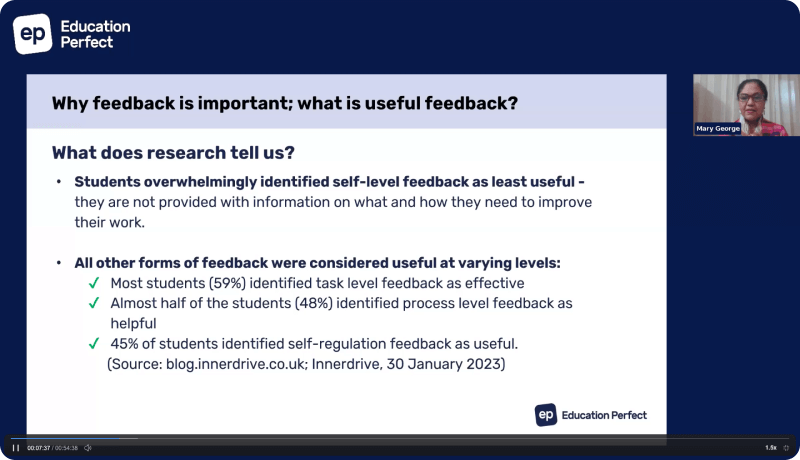The Power of Culturally Responsive Education

An experienced educator and English teacher for nearly 20 years, Sonia Panapa is currently studying for her Masters of Education (Leadership) through the University of Canterbury and has a long-held passion for seeing Māori and Pasifika students achieve at the highest level.
Culturally responsive instruction was born from a need to address the challenge of how best to serve the needs of culturally diverse students in classrooms. In the last few decades, traditionally western-dominated societies and their associated social systems (education, health, etc.) have experienced extraordinary change in the cultural and ethnic diversities of the people (Fletcher et al, 2008) and as a consequence, much has needed to be learned about how to best meet their needs.
At the centre of culturally responsive practice is the need for teachers to allow for a student’s culture to enter the classroom and to do that they need to have knowledge of and empathy for student’s different identities; validating, affirming and valuing who they are, their culture, language and experiences, and seeing these as strengths rather than deficits (Macfarlane, 2010; Sedita, 2022; Fletcher et al, 2011). There are a number of aspects to consider including the curriculum and the perspectives of the curriculum being delivered, the pedagogical approaches used by the teacher, and the attitudes and expectations of the teacher which enables relationships of care and mutual respect, and which sets the climate in the classroom (Toppel, 2015; Au, 2007; Macfarlane, 2010). The research by John Hattie (2003) on what makes the biggest difference to student outcomes at school, demonstrates how significant teachers are – their contribution to student outcomes (30%) is larger than the contributions made by home, peers, school and the principal combined (20%). His research concludes that what teachers know, do, and care about, makes a difference (Hattie, 2003).
Positive relationships and respect.
Research has made it clear that the ability of a teacher to form positive relationships of care and mutual respect with culturally diverse students is critical. This includes teachers making an effort to find out about and connect with their students, having high expectations of their students, building a strong sense of self-belief in students, and ensuring students have a sense of belonging in their classroom by demonstrating understanding of, and empathy for, their culture (Bishop & Berryman, 2010; Toppel 2015; Macfarlane, 2010; Fletcher et al, 2011). Gay (2010) describes culturally responsive caring as “teachers caring for students rather than about them” (cited in Toppel, 2015). This includes teachers ensuring that students’ interests and strengths are harnessed and that differences are not seen as deficits. Macfarlane (2003) found a positive relationship between a student’s strong ethnic identity and sense of belonging in a classroom – fostered by a teacher’s pride and commitment to the student’s culture – and school performance. Caring is therefore about taking the time to get to know students, trying to understand the perspectives and experiences they bring to the classroom and allowing for their cultural knowledge to be valued and cherished (Toppel, 2015).
The importance of whanau.
To truly value students’ cultural knowledge, McNaughton (2002) explains how critical the development of home-school partnerships are. When teachers make personal connections with their students, getting to know them beyond the classroom, they can then have a better understanding of how their cultural influences and background experiences affect their learning at school (Toppel, 2015). However, educators need to ensure they don’t view students simply in terms of their traditional cultural heritage; cultures adapt and change over time, particularly in multicultural contexts such as New Zealand where students can come from culturally-blended families as well as being exposed to the youth cultures of their time (Kelly et al, 2021).
Teachers intuitively know that strong relationships with whānau and students are the foundation of exceptional education. Understanding the research behind this approach, and integrating that knowledge into classroom pedagogy is where the challenge – and reward – enters into play. An open and honest dialogue about successes and failures, challenges and triumphs, and hopes and dreams for our students helps us all to become better educators and empowers our students to achieve their true potential.
Works Cited
Bishop, R. & Berryman, M. (2010). Te Kotahitanga: culturally responsive professional development for teachers. Teacher Development, 14(2), 173-187.
Gay, G. (2010). Culturally responsive teaching: Theory, research, and practice ( 2nd ed.). New York, NY : Teachers College Press .
Fletcher, J., et al. (2009). Pasifika students: teachers and parents voice their perceptions of what provides supports and barriers to Pasifika students’ achievement in literacy and learning. Teaching and Teacher Education, 25(1), 24-33.
Fletcher, J. Parkhill, F. Harris, C. (2011) Supporting young adolescent students from minority cultural groups who are underachieving in learning. Support for Learning. Blackwell Publishing: Oxford.
Kelly, L. B., Wakefield, W., Caires-Hurley, J., Kganetso, L. W., Moses, L., & Baca, E. (2021). What Is Culturally Informed Literacy Instruction? A Review of Research in P–5 Contexts. Journal of Literacy Research, 53(1), 75–99.
McNaughton, S. (2002). Meeting of Minds. Wellington: Learning Media.
McNaughton, S. (2020). The literacy landscape in Aotearoa New Zealand. Final Report: https://dpmc.govt.nz/sites/default/files/2021-12/PMCSA-20-15_The-Literacy-Landscape-in-Aotearoa-New-Zealand-Full-report-final.pdf
Sedita, J. (2022). Culturally Responsive Literacy Instruction. Literacy Lines
Toppel, K. (2015). Enhancing Core Reading Programs with Culturally Responsive Practices. The Reading Teacher, V68, p552-559.




